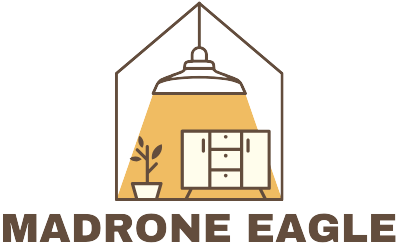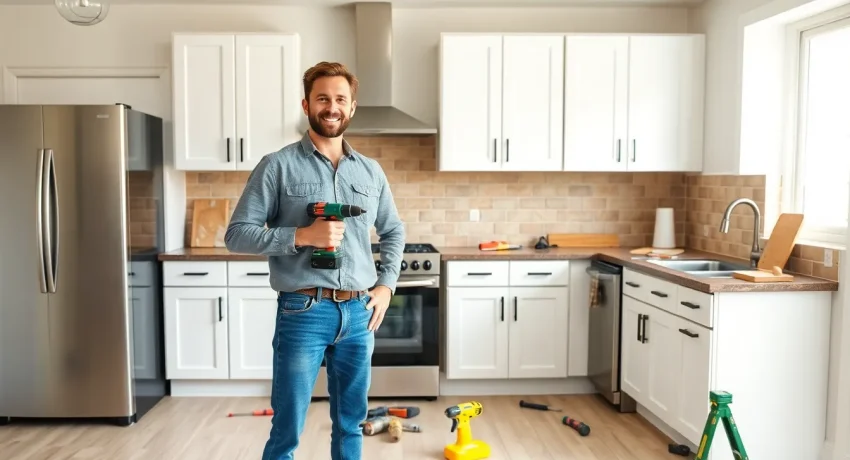Kitchens are the heart of any home, but who says they can’t also be a canvas for creativity? Imagine transforming that outdated space into a culinary wonderland without breaking the bank—or your sanity. DIY kitchens are not just a trend; they’re a revolution for anyone ready to roll up their sleeves and unleash their inner designer.
From budget-friendly hacks to jaw-dropping makeovers, the possibilities are endless. Whether it’s a fresh coat of paint or a complete overhaul, a DIY approach lets you inject personality into every corner. So grab your tools and get ready to turn that drab cooking zone into a fab culinary hub. After all, who wouldn’t want to whip up a gourmet meal in a kitchen that feels like a million bucks—without spending it?
Table of Contents
ToggleOverview of DIY Kitchens
DIY kitchens offer homeowners the chance to create personalized spaces that reflect their style. These projects can vary significantly, ranging from minor updates to complete remodels. Simple changes, like repainting cabinets or adding new hardware, can substantially alter a kitchen’s appearance. On the other hand, more extensive work might include installing new countertops or flooring.
Cost-effectiveness ranks highly among DIY kitchen projects. Many homeowners appreciate the potential savings by taking on tasks themselves. Budget considerations motivate individuals to seek creative solutions without sacrificing quality. Online resources, like tutorials and instructional videos, make detailed guidance easily accessible.
Flexibility plays a role in the DIY approach as well. Each user can prioritize what matters most in their kitchen. Preferences might include improved functionality, aesthetic upgrades, or enhanced storage solutions. Adapting design plans according to personal needs promotes satisfaction with the end result.
Inspiration sources abound for those embarking on DIY kitchens. Numerous platforms feature before-and-after transformations, showcasing diverse styles and techniques. Community forums allow DIY enthusiasts to share tips, materials, and experiences, fostering a sense of belonging. Engaging with others on similar projects creates a support network that enhances creativity and motivation.
Overall, DIY kitchens empower individuals to transform their cooking spaces into environments reflecting their personalities. From small adjustments to comprehensive renovations, homeowners can embrace creativity and budget-friendly tactics in redefining their kitchens.
Benefits of DIY Kitchens

DIY kitchens offer numerous advantages that appeal to homeowners looking to enhance their culinary spaces. Creativity and budget considerations often drive these unique kitchen projects.
Cost Savings
Cost savings represent a significant benefit in DIY kitchens. Homeowners often save up to 30% on labor costs by tackling tasks themselves. Materials can also be sourced affordably, with local hardware stores frequently offering promotions. Choices range from budget-friendly paint options to high-quality countertops. When individuals take control, they prioritize expenditures, ensuring each dollar goes toward aspects that enhance their vision. Savings not only encourage more projects but also pave the way for future renovations. Every completed DIY task reduces reliance on contractors while enhancing the satisfaction of transforming a space.
Personalization Options
Personalization options in DIY kitchens empower individuals to create unique spaces. Homeowners can select colors, materials, and designs that resonate with their style preferences. Unlike standard installations, DIY projects allow for custom cabinet configurations and unique layout changes. Choices might include open shelving for a modern touch or intricate tile backsplashes for a personalized flair. Each decision reflects the homeowner’s vision, making the kitchen truly theirs. Inspiration provided by online platforms fuels creativity, enabling anyone to visualize their dream kitchen. With the freedom to innovate, personal touches enhance both functionality and aesthetics.
Common DIY Kitchen Projects
DIY kitchen projects enhance aesthetics and functionality while saving costs. Homeowners can tackle various tasks independently to create their ideal kitchen spaces.
Cabinet Refacing
Cabinet refacing involves updating existing cabinets without full replacement. Homeowners can select new doors, drawer fronts, and veneers. This method maintains the structure while refreshing the appearance. Cost estimates show that refacing saves about 30 to 50% compared to complete cabinet replacement. Flexible options exist for styles and finishes. Popular choices include wood veneers, laminates, or paint. A significant transformation occurs quickly, often completed in a weekend. Many online tutorials guide users through the process, offering tips for achieving professional results.
Backsplash Installation
Backsplash installation adds character and protects walls from splatters. Various materials, such as tile, glass, or metal, offer unique looks. Homeowners often find DIY backsplash projects manageable, requiring simple tools like adhesive and grout. Installation time typically ranges from a few hours to a full day, depending on the complexity. Many designs feature patterns or colors that enhance the kitchen’s overall style. Online resources provide extensive guidance on layout and installation techniques. Attention to detail yields a polished finish, making the kitchen feel cohesive and inviting.
Essential Tools for DIY Kitchens
Equipping a DIY kitchen project starts with essential tools. Homeowners must have a solid toolkit to effectively handle renovations.
- Measuring tape: Accurate measurements lead to successful layouts and installation.
- Level: Ensures surfaces, cabinets, and shelves remain straight, creating a polished appearance.
- Power drill: This versatile tool assists with various tasks, such as hanging shelves and installing hardware.
- Circular saw: Ideal for cutting materials like plywood and board, a circular saw provides precise cuts.
- Screwdriver set: A range of screwdrivers covers both flathead and Phillips screws typically seen in kitchen installations.
- Jigsaw: A jigsaw handles curved cuts needed for countertops and intricate designs effectively.
- Stud finder: Locating wall studs ensures secure installation of cabinets and heavy fixtures.
- Utility knife: This tool offers a precise edge for cutting through materials like caulk and cardboard.
- Paintbrushes and rollers: Selecting quality brushes and rollers helps achieve a smooth finish on cabinetry and walls.
Having these tools available makes each project more manageable and efficient. Homeowners can save time by preparing tools in advance, ensuring they’re ready for use. Each tool addresses specific needs within a kitchen renovation, streamlining the process. Proficiency with these tools leads to confidence in tackling more extensive projects over time. Users should also consider borrowing or renting tools for larger jobs, reducing costs associated with tool acquisition. Prioritizing the right tools enhances the overall DIY experience, fostering creativity in kitchen transformations.
Tips for Successful DIY Kitchen Renovation
Achieving a successful DIY kitchen renovation requires thoughtful planning and adherence to safety standards.
Planning and Design
Prioritize a clear vision before starting the project. Assess the current layout and think about the functionality required. Identify areas needing improvement, whether it’s enhancing storage or updating appliances. Sketch designs, considering the flow between cooking and dining spaces. Online design tools offer templates and inspiration, making it easy to visualize new layouts. Research material options to find budget-friendly choices that align with your style. Create a detailed timeline to keep the project on track. Establishing a realistic budget guides decisions and mitigates overspending during the renovation.
Safety Precautions
Safety ranks as a top priority in any DIY renovation. Equip oneself with proper personal protective equipment such as gloves and safety goggles while working. Read instructions on all tools for safe usage. Ensure the workspace remains clean and organized to prevent accidents. Disconnect power to appliances prior to any electrical work, reducing the risk of electric shock. Maintain ventilation when using paint or solvents, minimizing exposure to fumes. Keep a first-aid kit nearby for minor injuries or accidents. Taking these precautions creates a safer environment, allowing focus on creating the kitchen of your dreams.
Embracing a DIY approach to kitchen renovations opens up a world of possibilities for homeowners. It’s not just about saving money; it’s about crafting a space that truly reflects personal style and preferences. With the right tools and a clear vision, anyone can tackle projects that enhance both functionality and aesthetics.
The wealth of resources available online provides ample inspiration and guidance, making it easier than ever to embark on these transformative journeys. By prioritizing safety and planning effectively, homeowners can create beautiful kitchens that elevate their culinary experiences. Taking the DIY route not only revitalizes spaces but also fosters a sense of accomplishment and pride in the finished product.




